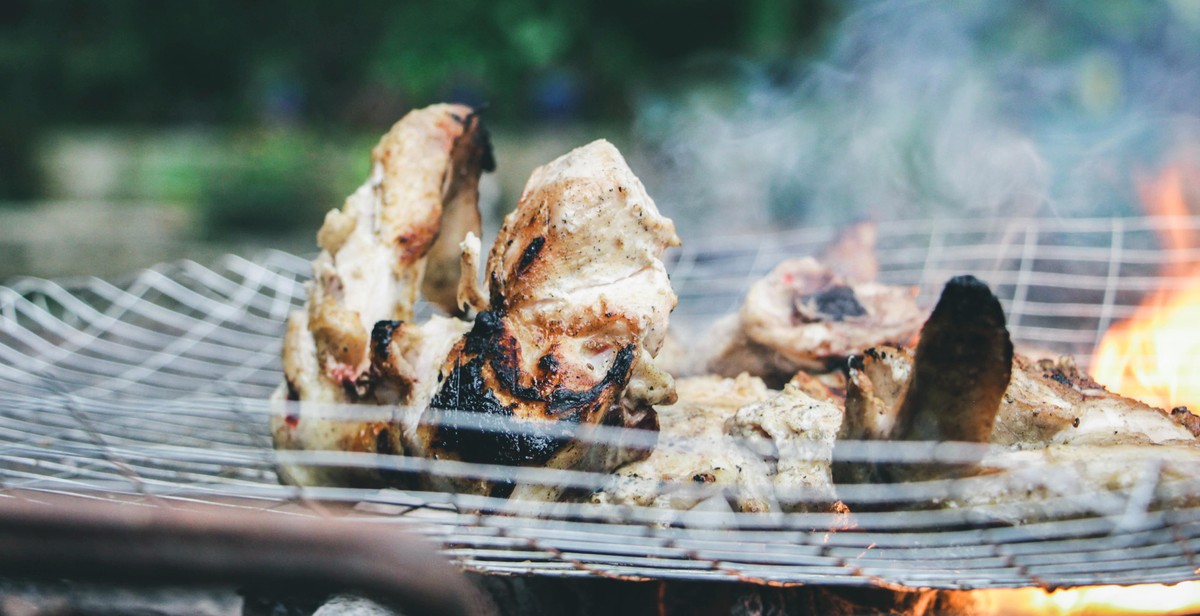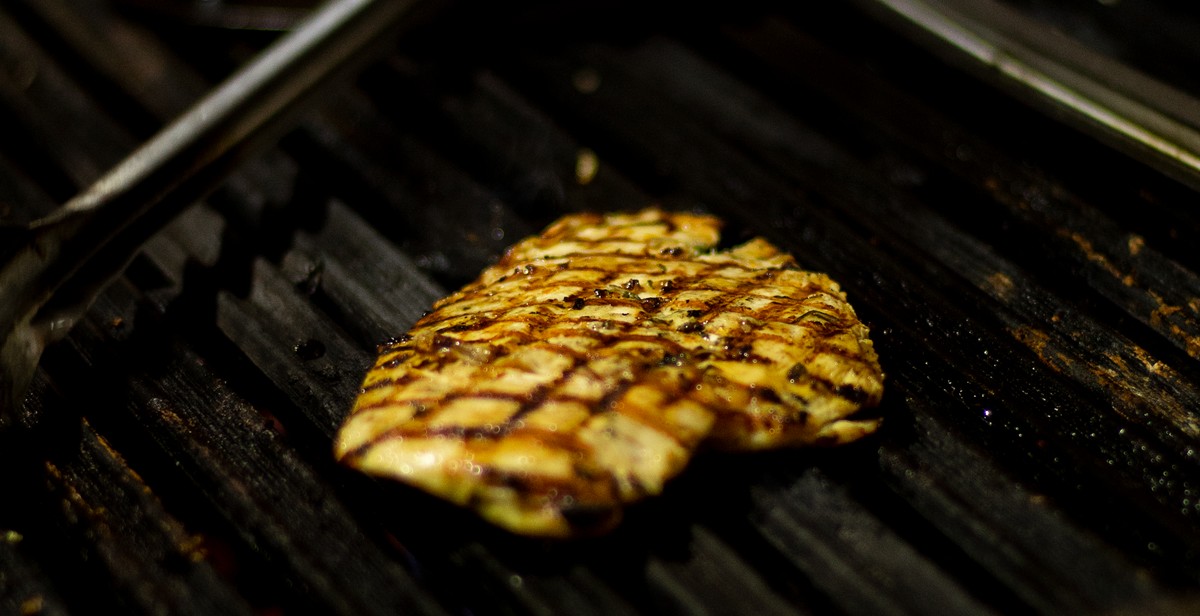How to Barbecue Chicken Wings with Different Flavor Profiles
Barbecue chicken wings are a staple for any outdoor gathering, from backyard barbecues to tailgating parties. However, the same old barbecue sauce can get boring after a while. That’s why it’s important to know how to barbecue chicken wings with different flavor profiles to keep things interesting.
There are countless ways to flavor your chicken wings, from sweet and tangy to spicy and savory. In this article, we’ll explore some of the most popular flavor profiles and how to achieve them on your barbecue.
Preparing Your Chicken Wings
Before you can get started with flavoring your chicken wings, you need to prepare them properly. Start by rinsing your wings under cold water and patting them dry with paper towels. Then, remove any excess fat and separate the wings into the drumette and wingette portions.
Once your wings are prepped, it’s time to add the flavor. You can marinate your wings for a few hours before grilling or season them with a dry rub. No matter which method you choose, be sure to let your wings sit for at least 30 minutes to allow the flavors to penetrate the meat.
Flavor Profiles
Now, let’s dive into the different flavor profiles you can achieve with your barbecue chicken wings:
- Sweet and Tangy
- Spicy
- Savory
- Smoky
- Herbaceous
Each of these flavor profiles can be achieved with different seasonings, sauces, and cooking techniques. We’ll cover the details of each in the following sections.

Choosing the Right Chicken Wings
When it comes to barbecuing chicken wings, there are a few factors to consider when selecting the right wings for your meal. Two of the most important factors are whether to use fresh or frozen wings, and whether to use drumettes or flats.
Fresh vs Frozen Wings
There is no clear winner when it comes to using fresh or frozen wings for your barbecue. Fresh wings tend to have a better texture and flavor, but frozen wings can be more convenient and cost-effective. If you choose to use frozen wings, make sure to thaw them completely and pat them dry before grilling to prevent excess moisture and uneven cooking.
Drumettes vs Flats
Drumettes and flats are the two main types of chicken wings. Drumettes are meatier and easier to eat, while flats have more surface area for flavor and tend to be crispier. When choosing between drumettes and flats, it ultimately comes down to personal preference. If you are serving a large group of people, it is a good idea to provide a mix of both types to please everyone.
| Pros of Drumettes | Pros of Flats |
|---|---|
| Easier to eat | More surface area for flavor |
| Meatier | Tend to be crispier |
Ultimately, the key to choosing the right chicken wings is to consider your personal preferences and the preferences of your guests. By selecting the right wings, you can create a delicious and memorable barbecue experience.

Preparation
Before you start grilling your chicken wings, it’s important to properly prepare them to ensure they come out tender, juicy, and full of flavor. Two methods for preparing chicken wings are brining and using a marinade or dry rub.
Brining
Brining involves soaking the chicken wings in a saltwater solution for several hours before grilling. This process helps to add moisture to the meat and infuse it with flavor. To make a brine, mix 1/4 cup of kosher salt with 4 cups of water and any additional seasonings you prefer, such as garlic, herbs, or spices. Submerge the chicken wings in the brine and refrigerate for at least 2 hours, or up to 24 hours for maximum flavor.
Marinade vs Dry Rub
Marinades and dry rubs are both great ways to add flavor to chicken wings, but they work in different ways. A marinade is a liquid mixture of oil, acid, and seasonings that penetrates the meat to flavor it from the inside out. A dry rub, on the other hand, is a mixture of spices and herbs that is rubbed onto the surface of the meat to create a flavorful crust.
When using a marinade, be sure to allow enough time for the chicken wings to absorb the flavors. A minimum of 30 minutes is recommended, but overnight marinating will yield the best results. Dry rubs can be applied just before grilling or up to 24 hours in advance.
Table: Brine vs Marinade vs Dry Rub
| Method | Pros | Cons |
|---|---|---|
| Brining | Moist and flavorful meat | Requires advance planning |
| Marinade | Infuses meat with flavor | Requires time for absorption |
| Dry Rub | Creates flavorful crust | May not penetrate meat as deeply |
Ultimately, the choice between brining, using a marinade, or a dry rub comes down to personal preference and the flavor profile you are trying to achieve. Experiment with different methods and seasonings to find the perfect combination for your barbecue chicken wings.

Grilling Techniques
Direct Heat vs Indirect Heat
When it comes to grilling chicken wings, there are two main techniques to consider: direct heat and indirect heat. Direct heat is when you place the chicken wings directly over the heat source. This technique is great for quickly cooking the wings and achieving crispy skin. However, it can also result in uneven cooking and burnt skin if not monitored carefully.
Indirect heat, on the other hand, is when you place the chicken wings away from the heat source and cook them with the lid closed. This technique is great for achieving tender and juicy wings with a smoky flavor. It also allows for more control over the cooking process and reduces the risk of burnt skin.
Smoking Wood Chips
Adding smoking wood chips to your grill is a great way to enhance the flavor of your chicken wings. Soak the wood chips in water for at least 30 minutes before adding them to the grill. This will help them smolder and create smoke, rather than burn up too quickly.
There are many types of wood chips to choose from, each with their own unique flavor profile. For chicken wings, fruit woods like apple and cherry are great options. They provide a sweet and mild flavor that complements the chicken without overpowering it. Hickory and mesquite are also popular choices for a more robust smoky flavor.
| Wood Chip | Flavor Profile |
|---|---|
| Apple | Sweet and mild |
| Cherry | Sweet and mild |
| Hickory | Strong and smoky |
| Mesquite | Strong and smoky |
When using smoking wood chips, it’s important to remember that a little goes a long way. Start with a small amount and adjust as needed to achieve the desired flavor.

Different Flavor Profiles for Barbecue Chicken Wings
Barbecue chicken wings are a staple at any cookout or party. They are easy to make and can be served in a variety of ways. One way to add some variety to your barbecue chicken wings is by using different flavor profiles. Here are some of the most popular flavor profiles:
Classic Buffalo Wings
Buffalo wings are a classic and popular flavor for chicken wings. They are typically made with a combination of hot sauce and butter. To make classic buffalo wings, you will need:
- 1/2 cup hot sauce
- 1/4 cup unsalted butter, melted
- 1/4 teaspoon cayenne pepper
- 1/4 teaspoon garlic powder
- 1/4 teaspoon salt
Mix all the ingredients in a bowl and toss the wings in the sauce. Serve with celery sticks and blue cheese dressing.
Honey Mustard Wings
Honey mustard wings are a sweet and tangy flavor that is perfect for those who don’t like spicy wings. To make honey mustard wings, you will need:
- 1/4 cup honey
- 1/4 cup Dijon mustard
- 1/4 cup mayonnaise
- 1 tablespoon apple cider vinegar
- 1/4 teaspoon salt
Mix all the ingredients in a bowl and toss the wings in the sauce. Serve with carrot sticks and ranch dressing.
Lemon Pepper Wings
Lemon pepper wings are a fresh and zesty flavor that is perfect for summer. To make lemon pepper wings, you will need:
- 1/4 cup lemon juice
- 1/4 cup olive oil
- 2 tablespoons lemon pepper seasoning
- 1/4 teaspoon salt
Mix all the ingredients in a bowl and toss the wings in the sauce. Serve with cucumber slices and tzatziki sauce.
Teriyaki Wings
Teriyaki wings are a sweet and savory flavor that is perfect for Asian-inspired dishes. To make teriyaki wings, you will need:
- 1/4 cup soy sauce
- 1/4 cup honey
- 2 tablespoons rice vinegar
- 1 tablespoon sesame oil
- 2 cloves garlic, minced
Mix all the ingredients in a bowl and toss the wings in the sauce. Serve with steamed rice and stir-fried vegetables.
| Flavor Profile | Ingredients | Serving Suggestions |
|---|---|---|
| Classic Buffalo Wings | Hot sauce, butter, cayenne pepper, garlic powder, salt | Celery sticks, blue cheese dressing |
| Honey Mustard Wings | Honey, Dijon mustard, mayonnaise, apple cider vinegar, salt | Carrot sticks, ranch dressing |
| Lemon Pepper Wings | Lemon juice, olive oil, lemon pepper seasoning, salt | Cucumber slices, tzatziki sauce |
| Teriyaki Wings | Soy sauce, honey, rice vinegar, sesame oil, garlic | Steamed rice, stir-fried vegetables |

Conclusion
In conclusion, barbecuing chicken wings with different flavor profiles is a fun and delicious way to experiment with your cooking skills. With the right marinades, rubs, and sauces, you can create a variety of tasty wings that will impress your family and friends.
When preparing your wings, it’s important to select high-quality chicken and to marinate them for at least a few hours before cooking. You can also experiment with different cooking methods, such as grilling or smoking, to achieve different textures and flavors.
Some of our favorite flavor profiles include sweet and spicy, garlic and herb, and Asian-inspired. However, feel free to get creative and come up with your own unique combinations!
Tips for Perfectly Cooked Wings
- Make sure your grill or smoker is preheated to the appropriate temperature before adding your wings.
- Flip your wings regularly to ensure even cooking and prevent burning.
- Use a meat thermometer to check that your wings have reached an internal temperature of 165°F before serving.
- Allow your wings to rest for a few minutes before serving to allow the juices to redistribute.
With these tips and flavor profile ideas, you’ll be well on your way to becoming a barbecue chicken wing pro. So fire up the grill, gather your ingredients, and get ready to impress your taste buds!
